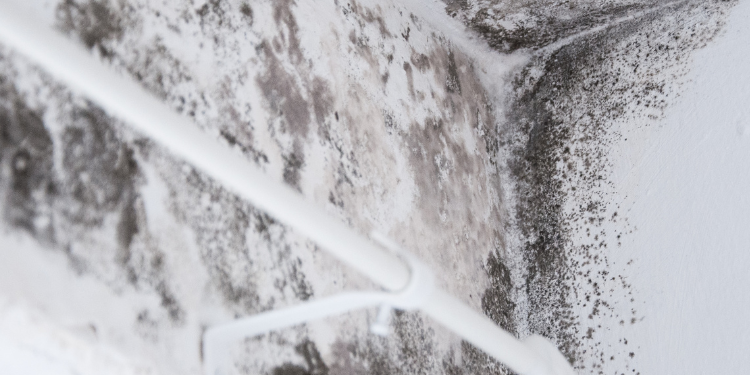Sick Building Syndrome (SBS) is a growing concern in workplaces across the country, especially in cities like Tampa, FL. It refers to a situation where occupants of a building experience acute health issues or discomfort, often without a specific identifiable cause. The symptoms may seem minor at first, like headaches, fatigue, or throat irritation, but prolonged exposure can lead to more serious health complications. Understanding the risks associated with Sick Building Syndrome and how it affects indoor environments can protect employees and foster healthier, more productive workplace
Key Takeaway:
Sick Building Syndrome is a silent health threat that impacts workers in poorly maintained or improperly ventilated buildings. By identifying the root causes and addressing issues like mold growth, poor air quality, and inadequate ventilation, employers can create healthier indoor environments for their employees.
Understanding Sick Building Syndrome and Its Effects
Sick Building Syndrome often manifests when certain conditions in a building cause adverse health effects. These issues can be difficult to detect, as the symptoms typically worsen the longer a person remains in the building. SBS can result from several factors, such as poor air quality, toxic chemicals, and the presence of mold. Left untreated, these problems can lower employee productivity and lead to increased absenteeism.
Mold Growth in Buildings
Mold, often hidden behind walls or in air ducts, is a common cause of Sick Building Syndrome. Mold thrives in damp environments, making it a prevalent problem in older buildings or those with poor ventilation. Stagnant air and humidity allow mold to grow undetected, releasing spores that can cause allergic reactions, respiratory issues, and other health complications. Addressing mold concerns with professional services, such as those offered by Tampa Bay Mold Testing, can be crucial in resolving SBS.
Inadequate Ventilation
Another factor contributing to Sick Building Syndrome is poor ventilation. When air circulation is compromised, pollutants and toxins remain trapped inside, leading to a build-up of harmful substances. A well-ventilated workspace helps flush out contaminants and bring in fresh air, improving the overall air quality. Ensuring proper ventilation, especially in enclosed spaces like offices, is key to minimizing the risks of SBS.
Chemical Pollutants in Office Buildings
Workplaces often contain harmful chemicals found in cleaning supplies, office furniture, or construction materials. Over time, exposure to volatile organic compounds (VOCs) from paint, adhesives, or carpeting can aggravate respiratory conditions, irritate the eyes, or trigger allergic reactions. Regular air quality assessments can help detect chemical pollutants, and reducing reliance on harsh chemicals can significantly reduce SBS-related symptoms.
How to Identify SBS in the Workplace
Sick Building Syndrome is difficult to diagnose because its symptoms often overlap with other common health conditions. Still, there are signs that suggest the building itself may be causing the problem. If symptoms such as headaches, fatigue, or irritation disappear after leaving the office, SBS could be the underlying issue.
Frequent Sick Days Among Employees
When employees frequently call in sick due to symptoms like nausea, dizziness, or skin irritations, it’s worth investigating the building’s environmental conditions. Frequent absenteeism might point to SBS, especially if multiple workers report similar issues. In these cases, an inspection by Tampa Bay Mold Testing can help identify hidden threats, such as mold or poor air quality.
Worsening Symptoms Indoors
One of the hallmarks of SBS is that symptoms tend to worsen the longer someone remains inside the building. Whether it’s a stuffy nose, difficulty breathing, or general discomfort, feeling unwell while inside and improving after leaving suggests that something in the environment is contributing to the problem.
Unusual Odors or Stale Air
Musty odors or a lingering staleness can be a red flag for poor air quality. These smells often indicate the presence of mold or insufficient ventilation, both of which can contribute to Sick Building Syndrome. Employees should report any unusual odors, as they could signal serious health risks.
Prevention and Solutions for Sick Building Syndrome
Addressing Sick Building Syndrome requires a multi-faceted approach. Regular building maintenance, air quality testing, and professional inspections can help reduce the risks associated with SBS. Preventing the growth of mold, ensuring adequate ventilation, and using low-toxicity products in the workplace can foster a healthier environment.
The Role of Professional Mold Testing
Mold is one of the most challenging aspects of Sick Building Syndrome because it often grows in hidden areas. A professional inspection by experts, like the team at Tampa Bay Mold Testing, can identify problem areas and offer solutions to remediate the mold. Routine testing and inspections are essential for maintaining a healthy workplace.
Improving Air Quality with Better Ventilation
Installing advanced HVAC systems, air purifiers, or dehumidifiers can enhance the air quality in a building. Regular maintenance of these systems ensures that pollutants don’t build up, reducing the likelihood of Sick Building Syndrome. Employers should prioritize air circulation as part of their office wellness strategies.
Using Non-Toxic Materials
Reducing exposure to harmful chemicals can significantly lower the risks of SBS. Choosing non-toxic cleaning supplies, paints, and building materials can make a noticeable difference in the health of building occupants. Additionally, opting for eco-friendly and low-VOC office products can promote better air quality in the long term.
Answering Common Questions
How does Sick Building Syndrome differ from other indoor air quality issues?
Sick Building Syndrome refers to a combination of symptoms that occur when inside a building and usually improve when leaving. Unlike specific indoor air quality issues, SBS doesn’t have a single, identifiable cause.
What are the long-term effects of working in a building with SBS?
Prolonged exposure to a sick building can lead to chronic health problems such as respiratory conditions, allergies, or even asthma. Over time, it can also result in a decrease in workplace productivity and higher medical costs for employees.
Can Sick Building Syndrome be fixed?
Yes, Sick Building Syndrome can be addressed by improving ventilation, removing mold, and ensuring the building is free from harmful pollutants. A professional inspection is often necessary to identify and resolve these issues.
The Impact of Poor Air Quality on Productivity
Poor indoor air quality, often a root cause of Sick Building Syndrome, can have a direct impact on productivity. Employees exposed to pollutants, mold, or stale air are more likely to feel fatigued, distracted, or unwell. This can lead to an increase in errors, slower work output, and overall dissatisfaction. By improving air quality through regular maintenance and testing, businesses can ensure their employees work in an optimal environment.
The Connection Between Mold and Sick Building Syndrome
Mold is a significant contributor to Sick Building Syndrome, as it releases tiny spores that can trigger allergic reactions and respiratory issues. Buildings with hidden water damage or poor ventilation are particularly susceptible to mold growth. Ensuring that a building is properly inspected and remediated can prevent the harmful effects of mold on occupants’ health.
Seeking Expert Advice
If you suspect that your workplace may be affected by Sick Building Syndrome, it’s crucial to seek expert advice. Companies like Tampa Bay Mold Testing offer professional assessments and mold testing services to identify and resolve potential risks. Their expertise can help ensure your workplace remains safe and healthy for all occupants.







